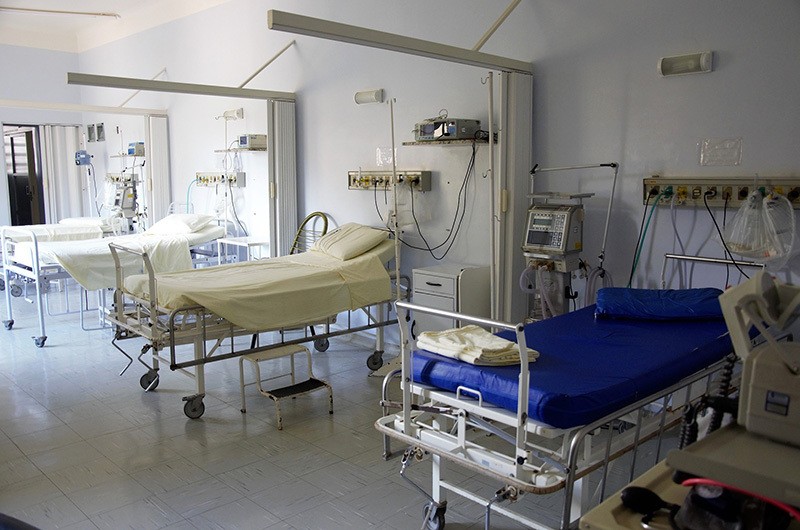
Beyond Reporting to Collaborative Management Facilitation
Have healthcare IT tools successfully improved the ability of organizations to provide exceptional patient care?
Our application designers, with expertise in technology, learning psychology and perceptive science, have listened intently to hundreds of healthcare leaders describe their experiences with numerous healthcare IT products. This research led us to identify several common weaknesses in the design of many such products and understand them in the perspective of the evolution of systems design over the past several decades.
Several challenges contribute to the commonly lamented fundamental issue of “too many moving parts”. Some key components that contribute to negative productivity are:
- Applications that are little more than databases, with forms for entry and reports, which only select and re-arrange the data, exactly as it was entered, without any real processing, transformation or added value.
- Applications that inappropriately mimic the steps in processes devised in a non-digital “paper” environment and artifacts (forms, diagrams, voluminous reports, and documents) that perpetuate the paper process’ characteristics. Such deliberate stagnation drains resources and impedes innovation.
- Applications that, in total, produce a deliverable that is only an intermediate step toward a real goal – of questionable necessity in terms of the goal – creating a call for attention and a false sense of accomplishment.
- Applications that fail to do the very things for which technology should be applied—to drastically reduce repetition, manage the vastness of raw data/information, leverage human decisions, help focus attention on important things, appropriately divide responsibilities between machine and human, and enable an increase in productivity.
These inefficiencies hinder an organization’s ability to achieve its goals, fulfill its mission and purpose, and work effectively and efficiently. One of the most impactful ways to address these issues is to enable active and appropriately-informed C-suite participation.
By focusing on and uniting the three essential questions of executive oversight—where are we, how did we get here, and what is being done to improve—such a platform can be the hub of management communication. All the meaningful information for both frontline staff and management is seen and acted upon in unison and is easy to access and understand so analysts and assistants do not have to intermediate. This delivers the spirit of Hoshin Kanri, in a facilitated workflow that ensures the strategic goals of a company are communicated through the organization to drive progress and action at every level within the organization, without dependence on complicated and time-consuming diagrams and other artifacts.
Instead of just delivering dead data in the form of reports, the ActionCue application facilitates action in the management of the improvement process by enhancing communication, focus, learning and accountability. Prista’s ActionCue Clinical Intelligence platform was specifically designed to enable a “Fast Path to Insight” – which creates intuitive communication tools throughout the organization and allows real-time collaboration to drive performance improvement. It goes beyond mere quality-safety reporting and empowers users at all levels of the organization to engage with an IT tool that optimizes both data collection and analysis.
This post is part 2 of our 7 Innovation series. Interested in reading more? Download the 7 Innovations that Deliver Strategic Value in Healthcare White Paper

Improving Healthcare in Rural Communities
Rural communities in the United States are facing dangerous changes in the healthcare available to them. The financial realities for full-service hospitals with a relatively small number of beds in small communities mean that enormous trade-offs will be made, just to ensure that the hospital in some form can survive.
According to the InDepth article “Rural Hospitals Look for Help To Survive” by Alex Kacik in Modern Healthcare, “The gulf between rural hospitals’ available beds and daily admissions widens every year, causing providers to scale down. Without help from the government or larger health systems, many more will likely close.”
As with organizations of all kinds – when facing financial pressures, ongoing lack of profitability and an inability to attract and retain talent, the search for solutions becomes all-important. Some rural hospitals are forming cooperative purchasing groups, hospital management organizations are finding ways to consolidate and prioritize the services offered, or reducing the number of hospital beds available.
The article continues, “Inevitably, rural communities will have to shutter hospital wings or otherwise pare down, said Lyndean Brick, president of the consultancy Advis Group.”
Yet, with all of these ongoing financial pressures, rural hospitals are still an incredibly critical part of the community ecosystem without which, it is possible that the loss of life and lack of access to healthcare would significantly degrade the quality of life for our small, rural communities.
“These independent hospitals need to find some way to gain scale and leverage to offset margin compression and achieve parity with everyone else who is consolidating around them,” Brenner said.
At the same time rural hospitals work on scaling their patient flow, increasing the effectiveness and efficiency of key process is a critical factor in improving both top-line and bottom-line finances. Technology can certainly play a role in positively impacting rural healthcare organizations in a way that enables them to provide quality care in a cost-effective way. For instance, telemedicine services may create opportunities for specialist consultations without long-distance travel.
As rural healthcare providers take on the challenge of diving more deeply into identifying and addressing the specific needs of their communities, an ability to derive real-time insight into the performance, and facilitate improvement of their organization, will be invaluable. The point to be communicated here is that all hospital have been addressing quality and safety reporting for decades, but now the critical imperatives are to (1) extend the goal from generation and delivery of reports to achieving real clinical performance improvement, and (2) address that goal far more efficiently than has been done in the past. Quality-safety applications like Prista’s ActionCue Clinical Intelligence enable insight and implementation of performance improvement plans that both impact reimbursement and increase care quality.
But let’s be clear. It is not simply the application of some technology that brings about more effectiveness and efficiency, but how that information technology is designed and the goals driving that design. Any software that merely captures basic information about safety events, requiring humans to then organize a PI action plan, go back to the setting of an event to ask questions, gather and process data into a usable and informative format and do numerous other manual and ad hoc administrative functions is not at all improving the efficiency of the overall process. Not until fundamental innovation in IT and process are undertaken, those tools that are simply “reporting” oriented are replaced by a functional platform that truly facilitates the performance improvement process, and saves its users significant time in that pursuit, will progress be made toward the triple aim. That is the only way clinical performance has can be optimized for better operational, regulatory and financial outcomes.

Reducing Preventable Errors Requires a Sustained Shift in Processes and Culture
Preventable medical errors are a serious issue in healthcare and are estimated to be the third leading cause of death in the US, behind cancer and heart disease. The issue has garnered more attention within recent years, and for good reason, as according to a Mayo Clinic study, 8.9% of surgeons reported they believe t have made a major medical error within the last three months. There are many causes for medical errors, including communication problems, organizational transfer of knowledge, staffing patterns/workflow, and more.
Hospital administrators have seen a certain level of improvement in the number of medical errors by taking action based upon the findings and recommendations of several private- and public-sector organizations aimed at increasing communication, information sharing and teamwork among providers. While these methods can be effective, healthcare leaders must take their efforts a step further to create impactful change. Perhaps first and foremost, healthcare executives must drive efficiency and a value proposition into the consideration of changes. Sadly, many of those recommendations coming from traditional experts and thought leaders in healthcare amount to a hospital’s staff doing more supportive and administrative work for the sake of improving the quality and safety of patient care. This cannot be a good way to lower costs and improve patient care on a sustainable basis.
Sustained improvement in quality of care requires a significant shift in culture, facilitated by the optimization of work processes for clinical staff, increased involvement and leadership by executives, and an unrelenting focus on patient safety and quality. A subtle, but very important, aspect of this shift in approach is to orient the changes and innovations around the goal, rather than the historical activities and artifacts used in previous decades in managing and improving quality-safety. While applying information technology can be a major contributor to optimizing these processes, success – including the streamlining, reduction or even elimination of some steps and artifacts – requires that the IT be very well designed around the capabilities of the technology, the human/user factors and a keen knowledge of the work environment and goals.
Achieving quality goals requires a commitment to creating a “Culture of Quality,” in which senior healthcare executives both lead and participate. It requires open, transparent and bi-directional communication at all levels, but in order to get true “buy in” from clinical staff, the processes and procedures that make up their day-to-day must be efficient, intuitive and sensible. Quality improvement must be woven into every facet of their daily actions, with a continuous reminder of shared goals, as well as updates on progress. Placing the improvement process itself at the center of the overall quality-safety effort leads to reverse engineering and optimizing the pathway to the goals of better patient care, lower costs and a sustainable culture around both.
We kept these guiding principles in mind when developing the ActionCue Clinical Intelligence quality and performance improvement platform. We designed the application to save time among users, by ensuring their day-to-day functions are not only easy to use and understand, but also intuitively match their natural tasks. Furthermore, the system works to effectively shape their behavior through the encouragement of effective quality improvement methodologies. When clinical staff are presented with quality improvement technology that is efficient and helpful, they are more likely to remain committed to improving quality of care.
Effective leadership is essential in creating a sustained culture shift. Executives must remain committed to improving patient safety through involvement in staff’s daily functions, and monitoring of clinical issues and what’s being done to resolve them. ActionCue’s reporting feature allows staff to prepare reports in minutes, making it easy to provide executives with insight into quality improvement progress. This not only saves time, it allows upper management to remain an active participant and leader in the achievement of quality improvement goals.
Reducing medical errors requires a commitment from both clinical staff and hospital management to a “Culture of Quality.” ActionCue CI can help hospitals achieve this sustained culture shift through one easy-to-use online platform. If you’d like to learn more about how ActionCue is using innovation to improve patient care, download our recent white paper.

Driving Efficiency at All Levels: Organization, User, Provider
Everyone knows time is money, and healthcare consumes too much money. Therefore, it stands to reason that a major objective for hospitals and healthcare systems should be to save time and resources at all levels of the organization and throughout the supply chain. There are several facets to the drive for efficiency, but we’ll focus on the three main levels that successful performance improvement tools can make a positive impact on productivity and cost.
Organization
One way to pass time savings onto organizations is to operate the SaaS model of delivery, in which software is licensed on a subscription basis and is centrally hosted. This eliminates the need for incremental infrastructure—or the maintenance of it—in order to obtain additional benefits. There are several additional benefits in operational cost by not offering the “package and deliver” approach as an option for the customer, as some companies do. A commitment to operating at high levels of efficiency means providers are able to make the acquisition and continued use of the platform remarkably inexpensive.
One of the most impactful ways Prista passes efficiency onto organizations is by reducing the amount of customization utilized within our business model. Although it’s important to be responsive to customers’ needs and requests, the vast majority of healthcare IT customization is based on personal preferences, rather than needs, especially those aimed at imitating paper forms, previous processes, or outdated mandates. The fact is, customization can be a very lucrative business model for vendors and a very large, ongoing expense for customers. This is detailed in our recent blog post “Customization: The Gift That Keeps On Costing.” Aside from the real-dollar costs of significant ongoing customization, there is the added investment of time for key hospital staff and management in creating detailed requirements, reviewing revised software and testing functionality throughout the customization process, not to mention the learning curve of healthcare professionals on the language, disciplines and processes of the software business.
In contrast to the customization-oriented model, successful providers should focus on the turnkey nature of their application. A great deal of healthcare and clinical domain expertise went into the design of the ActionCue CI platform, so that workflow processes, terminology, content selection, and styling are already present “out of the box.” This way, organizational leaders don’t need to spend time specifying what they need or expect in the application. Aside from the healthcare knowledge applied, UI/UX designers should deliver the application to the customer as a finished product useable by the customer within days of start-up, rather than as toolkit that takes six to nine months before the “go live” date.
To accommodate the variability of customer types, including short-term acute hospitals, ambulatory surgical centers, and home health and rehab, and to adapt to the evolution of the quality-safety efforts over time, we made ActionCue CI extremely configurable, so customers, sometimes with the assistance of support staff, can adapt the application, using plain English configuration selections, quickly, efficiently and usually without any cost.
Individual User
The specific design of the application should save time among key users throughout the organization. By ensuring the routine and administrative functions of the application are easy to use and understand, organizations almost never have to hire data analysts or additional clerical staff to assist with workload or technical tasks.
ActionCue CI’s fast, intuitive event reporting reduces the time between an event being reported and getting resolved and allows users to easily and quickly prove they are monitoring quality within the organization. The systems’ workflows were designed to not only match the natural tasks and processes of users, but also shape their behavior by encouraging methodologies that produce targeted results, and increase efficiency and accountability. The design goes beyond ease-of-use to advance the way in which healthcare organizations engage with information in an application.
Using ActionCue, staff can create comprehensive, insightful and simple reports within minutes, which reduces the amount of time executives spend in meetings analyzing confusing or incomplete data sets. At a glance, healthcare professionals can see the real-time condition of their entire facility’s quality and performance initiatives.
Provider
SaaS-model companies, such as Prista, operate on the latest technology platforms, facilitating rapid development and deployment of changes, making them far easier and less expensive to maintain. Companies that have started out as such build their entire operations around utilizing the most up-to-date technologies and methodologies, so their internal operating expenses are lower than those of traditional software companies. These and other efficiencies allow SaaS-model companies to pass their savings along to customers, driving down prices, usually as non-capitalized monthly or annual subscriptions.
Additionally, Prista support staff, with whom customers first and regularly engage, have credentials in Quality Management and Safety. Those staff members also have input on the product design, so that content delivered is accurate, correctly applied, and easy to understand. The ongoing working relationships provide users with a sense of partnership in which they gain knowledge of how the application works, and how it can be best applied to their role.
Efficiency was a guiding principle for the Prista business model, and it’s incorporated into every facet of the ActionCue CI platform. We’re proud to pass our savings along to our customers and ensure ActionCue is driving efficiency at the larger organizational level, as well as making the day-to-day functions of key users more simple and enjoyable. If you’d like to learn more about driving efficiency within your healthcare organization, check out this recent blog post.
This post is part 1 of our 7 Innovation series. Interested in reading more? Download the 7 Innovations that Deliver Strategic Value in Healthcare White Paper

Reverse Engineering an Optimal Performance Improvement Process
In technology circles, reverse engineering is the process of starting with a given end state, such as a product, device, conceived process or operation, and figuring out—in reverse—how to build it. The evolved current state of healthcare quality and performance improvement warrants a similar reverse engineering exercise, and, when executed properly, can result in a truly optimized process, positively impacting patient care and safety.
The Performance Improvement Landscape
Historically, the hospital functions of Quality Management, Safety Reporting and Performance Improvement were predominantly carried out to produce data and documents for submission to external parties, including accreditors, regulators, government agencies, researchers and the like. Those external parties defined the content, format and methodologies of the material to be submitted, and those hospital functions operated toward the objective of sending or submitting the various data and reports in the form and frequency mandated. The actions hospitals took in response to the data and reports was secondary, limited and typically initiated at a much later time than when it was submitted. This delayed, disjointed and reactionary approach proved ineffective for enacting real change within the organization.
Today, with the progressive shift into the system and cultural environment of Pay for Performance, rapid, efficient improvement of clinical outcomes is the internal responsibility of hospital staff all the way up to the C-suite. The game has changed fundamentally, and this priority must remain the focus and goal for hospitals to ensure their success, if not survival.
As described in the Harvard Business Review article, “Why Process is the U.S. Health Care’s Biggest Problem,” processes for medical care and therapies are often localized, personalized and very difficult to improve systematically and fundamentally. These widespread irregularities and weaknesses also apply, maybe even more intensely, to administrative processes, including Quality Management, Safety Event Reporting and Performance Improvement. It is human nature when trying to improve processes to hold on to, and simply shuffle, the artifacts and activities of previous processes, impeding meaningful change. This, too, is admittedly a widespread practice within healthcare administration.
Reverse Engineering for Optimization
For this reverse engineering exercise, we must depart from the activities and artifacts of previous processes built around the different original goal of simply producing reports. With a focus on accomplishing meaningful improvement in quality and safety of patient care, we recognize that the goal is really to optimize a mental pathway to insight that leads to taking corrective action. Those organizations producing the same data, reports, and documents they always have, and trying to accomplish the new goal of active, internal improvement, must undertake a tremendous amount of human effort to cover the distance between the old deliverables, built for an old goal, and the accomplishment of the new goal. Resource constraints, misguided efforts, organizational boundaries, and inadequately designed tools and systems make this ongoing effort a huge problem of ineffectiveness and inefficiency.
While the optimal environment and process for improvement-centered work still involves capturing, processing, analyzing and presenting data and narrative information from the clinical environment, it also requires a relatively advanced design for an integrated, collaborative working platform. The priorities of such a design should center on learning and action for improvement. Technology can be harnessed to bring a wide array of quantitative data, qualitative facts and circumstances of events, assessments of contributing causes and corrective actions from investigations, reference material on procedural innovations and best practices, and tracking of communication and referrals, right to the fingertips of Performance Improvement (PI) experts.
By changing the quality-safety improvement effort of the organization from one of “too many moving parts” to a coherent whole aimed at the comprehensive goal of improved quality-safety for patients, healthcare organizations can finally make real progress on several important fronts. This is a crucial step in the objectives many experts talk about: achieving effective executive leadership and creating/sustaining a culture of quality. In order to exist as a transformative element, delivering real process change, an effective platform must not simply wrangle data, but rather embody communication, teamwork, attention-focusing, prioritization, standardization, and other aspects of management facilitation, guiding individuals and the organization collectively towards a united goal. Only then can clinical performance improvement succeed and serve executives’ strategic clinical, regulatory, and financial objectives.
What are the benefits and pay-offs of having a truly effective and efficient quality-safety improvement process?
With patient care being so fundamental to the organization’s operational, regulatory and financial objectives, a sustained, optimal improvement process has both tactical and strategic impacts, including:
- Clinical staff and executive management enjoy immediately recognizable, significant time-savings within their respective roles in the pursuit of quality-safety, through aggressive leverage of technology, balanced with a pleasant and effective user experience for healthcare professionals. This is increased by a much higher degree of collaboration across the Quality Management (QM), Safety and PI organizations, with those functions being tightly integrated, resulting in greater flexibility in assignment and staffing.
- The organization’s executives’ leadership is better engaged in terms of (1) setting and communicating direction and focus for the improvement goals and efforts, and (2) facilitating proper executive oversight through clear and timely “big picture” views, critical alerts, selective insights into the process and the ability to very easily drill-down to the desired level of detail.
- By centering on the quality-safety improvement process, attention and action are focused on impacting the very elements affecting reimbursement penalties, non-reimbursed care, remedial compliance actions, litigation costs, insurance premiums, and other Pay for Performance and “cost of quality” factors, which take a big bite out of the organization’s top- and bottom-line finances. Effects on real-dollar ROI have been proven repeatedly.
- History has shown that trying to educate staff into a significant change or ramp-up in motivated work effort is typically ineffective or short-lived. However, by upgrading their work from passive, transactional tools, like basic databases and report generators, to advanced workflows designed to carry out best practices, the work itself changes. This transforms their thought processes, and then attitudes and motivation follow and are sustained. It is strongly suggested this is the only way to develop the much-sought “culture of quality”.
- Unifying and simplifying the visibility of all clinical performance issues – as opposed to everyone’s being overwhelmed by the countless, fractured elements – has a collateral benefit of keeping the whole team alert and focused on those things on which they should be working. This collective mindset helps the organization be more proactive than reactive, more disciplined than frantic, and more cooperative than competitive or fault-finding.
This is the kind of innovation you’ve been searching for and can now obtain. By reverse-engineering the performance improvement process, healthcare organizations can part with ineffective and outdated processes, and invest in improvement-centered solutions that go beyond simply producing reports for external parties, and instead use insights to drive action that improves the quality and safety of patient care.
